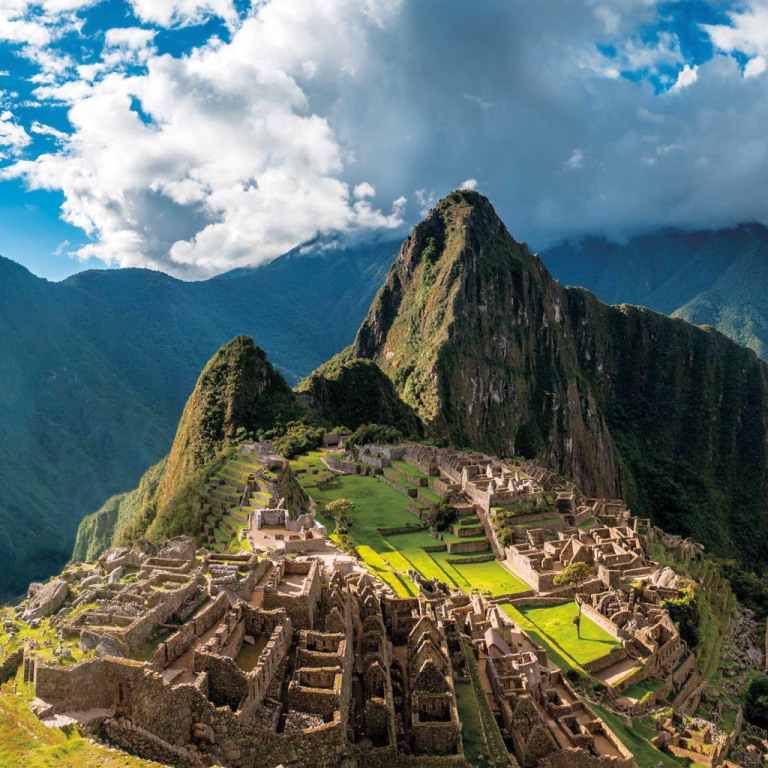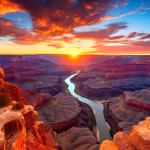Nestled high in the Andes Mountains of Peru lies one of the most remarkable archaeological wonders of the world: Machu Picchu. This ancient Incan city, often referred to as the “Lost City of the Incas,” stands as a testament to the ingenuity, architectural prowess, and spiritual depth of the Incan civilization. For travelers and historians alike, Machu Picchu is a destination that offers a fascinating glimpse into a mysterious past, set against a backdrop of breathtaking natural beauty.
A Brief History of Machu Picchu
Machu Picchu was built in the 15th century under the reign of the Inca emperor Pachacuti. It is believed to have served as a royal estate or a sacred religious site, although its exact purpose remains shrouded in mystery. The city was constructed using traditional Incan techniques, with precisely cut stone blocks that fit together without the use of mortar. This method has allowed the structures to withstand centuries of earthquakes and natural wear.
Abandoned in the 16th century during the Spanish Conquest, Machu Picchu remained unknown to the outside world until American historian Hiram Bingham brought it to international attention in 1911. Today, it is recognized as a UNESCO World Heritage Site and one of the New Seven Wonders of the World.
Exploring the Ruins
Visitors to Machu Picchu can explore a variety of structures that offer insights into Incan life and culture. Some of the most notable sites include:
- The Intihuatana Stone: Often referred to as the “Hitching Post of the Sun,” this ritual stone is believed to have been used by Incan astronomers as a solar clock or calendar. Its precise construction allowed the Incas to track celestial events with remarkable accuracy.
- The Temple of the Sun: This semi-circular temple was dedicated to Inti, the Sun God. Its strategic positioning allows sunlight to illuminate the temple through a specific window during the winter solstice, demonstrating the Incas’ advanced understanding of astronomy.
- The Room of the Three Windows: Part of the Sacred Plaza, this structure features three trapezoidal windows that overlook the Andes. The significance of the three windows remains a subject of speculation, with some theories suggesting they represent the three realms of Incan mythology: the heavens, the earth, and the underworld.
- The Central Plaza: This open area was likely used for ceremonial gatherings and public events. Surrounded by terraced fields, it provides a stunning vantage point to admire the surrounding landscape.
The Journey to Machu Picchu
Reaching Machu Picchu is an adventure in itself. Most visitors begin their journey in the city of Cusco, the historic capital of the Incan Empire. From Cusco, travelers can take a scenic train ride through the Sacred Valley to the town of Aguas Calientes, the gateway to Machu Picchu. For the more adventurous, the Inca Trail offers a multi-day trekking experience that culminates in a sunrise arrival at the Sun Gate, providing the first breathtaking view of the ancient city.
Preserving the Legacy
As a major tourist destination, Machu Picchu faces challenges related to conservation and sustainability. Efforts are ongoing to protect the site from environmental damage and the impact of tourism. Visitors are encouraged to follow guidelines that minimize their footprint, such as staying on designated paths and not touching the delicate stone structures.
A Spiritual and Cultural Experience
Beyond its historical and architectural significance, Machu Picchu holds a deep spiritual resonance. The Incas believed that their emperor was the son of the Sun, and they constructed their cities in harmony with the natural world. This connection to nature and the cosmos is palpable when walking through the ruins and observing the meticulous alignment of buildings with the surrounding mountains and celestial events.
Planning Your Visit
To make the most of your visit to Machu Picchu, consider the following tips:
- Timing: The best time to visit is during the dry season, from May to September. Arriving early in the morning or late in the afternoon can help you avoid the crowds.
- Tickets: Entrance to Machu Picchu is limited and tickets often sell out months in advance. Be sure to book your tickets early.
- Guides: Hiring a knowledgeable guide can greatly enhance your understanding of the site’s history and significance.
- Altitude: Machu Picchu sits at an elevation of 2,430 meters (7,970 feet). Take time to acclimate in Cusco before your visit and stay hydrated.
Conclusion
Machu Picchu is more than just an archaeological site; it is a journey through history, culture, and the majestic beauty of the Andes. Whether you are an adventurer, a history buff, or a spiritual seeker, Machu Picchu offers an unforgettable experience that connects you with the ancient world in a profound way. As you walk among the ruins and gaze upon the same landscapes that inspired the Incas, you will understand why Machu Picchu continues to captivate and inspire visitors from around the globe.






